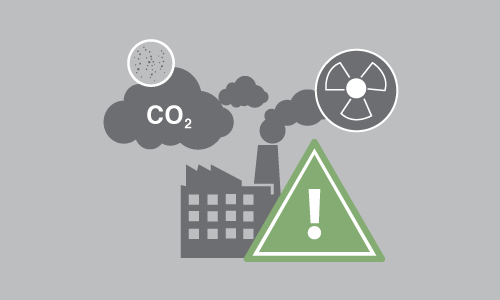The world of manufacturing presents many ongoing legal, legislative, and regulatory challenges.
From attempts to charge compliant manufacturers with public nuisance fines to the decision to change certain areas from moderate Ozone noncompliance to serious noncompliance (and pursuant changes to State Implementation Plans) it’s tough to stay compliant, competitive, and cost conscious.
Knowing this, unplanned downtime to your air pollution control system is noncompetitive, noncompliant, and most certainly not cost conscious. In the event that your oxidizer unexpectedly shuts down, everything shuts down as your team goes into scramble mode to make repairs, find parts, or get in contact with a company who can provide emergency service.
Following recent blogs on the importance of having a maintenance checklist and the design practices for these maintenance plans, we would today like to turn our attention to a key component of these programs: Spare parts.
A Spare Parts Program for Air Pollution Control: Why It Matters
In our earlier maintenance blogs, we discussed the importance of documenting a spare parts program:
“The first part of any good maintenance plan is knowing how you will replace a damaged part or piece of equipment. This starts by developing an inventory of the parts you already have, ordering parts you may need, and knowing where you can get large assets quickly and with minimal downtime.”
Combined with routine well-documented maintenance, a spare parts program will keep your air pollution control system running smoothly, extend the solution’s useful life, and help you identify certain parts you may need to order more frequently.
Developing a Spare Parts Replacement Plan: The Four Levels of Necessity
This, unfortunately is where it gets more confusing, as there is no solid answer to the question “what do we need?” Just as there is no one-size-fits-all solution to your pollution control needs, there is also no way to give you an accurate answer without seeing your make, model, or control panel diagrams.
That said, understanding the importance of each part of an oxidizer is your first step in the process. In this, we recommend using the following four categories to establish a spare part replacement program:
Critical/Must Have Parts: Potential to Cause Significant Downtime
The primary tier of replacement parts, these are the pieces of equipment that are either likely to require frequent maintenance, would represent a significant challenge to acquire, or are vital to oxidizer control.
Recommended: Important but Unlikely to Fail
While important to the safe and reliable operation of your system, parts in this level are much less likely to fail and potential failures could be identified during a routine inspection.
While unlikely to fail, these parts are nonetheless essential to your equipment. Knowing this, it’s recommended to have them on hand or at least have a way to acquire these quickly.
Convenience Parts: Consumables
Generally representing consumables, these are not necessary to the operation of equipment, but are necessary for maintenance tasks and documentation purposes.
As Required
Certain parts of an oxidizer rarely fail and are not considered essential to the operation of a system. While not necessary, having a way to access these is relatively important.
The Best Way to Know What Falls into Each Category? Talk to Us
The best way to develop a spare parts replacement program is to know exactly what you need and have the must-have parts on hand to avoid downtime. From preventive maintenance to emergency service, we can design a service plan for most equipment makes and models, along with troubleshooting, maintenance, installation, repair and rebuild evaluations via expert technicians and CMM professional engineers. Learn more about how we work and contact us for more information.




